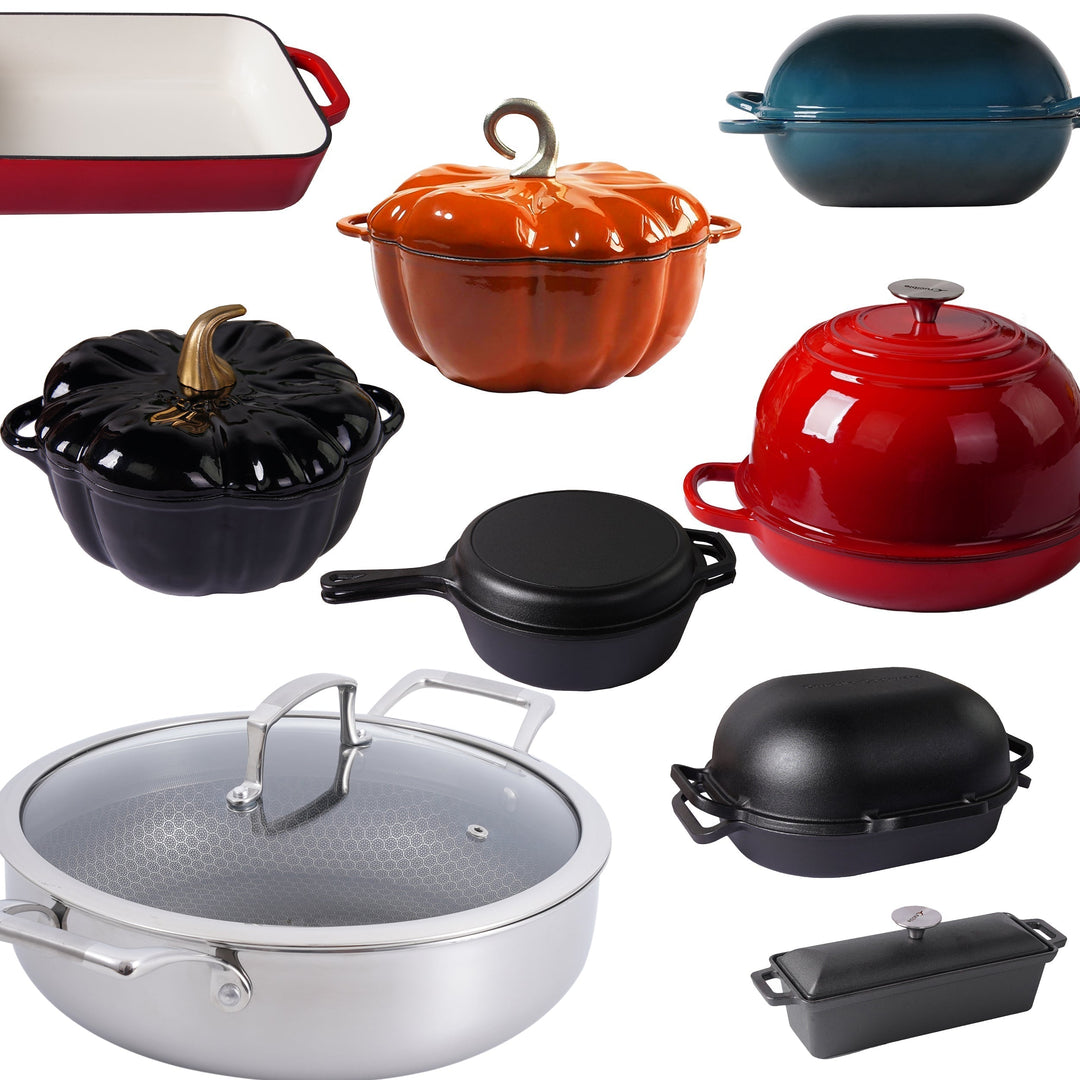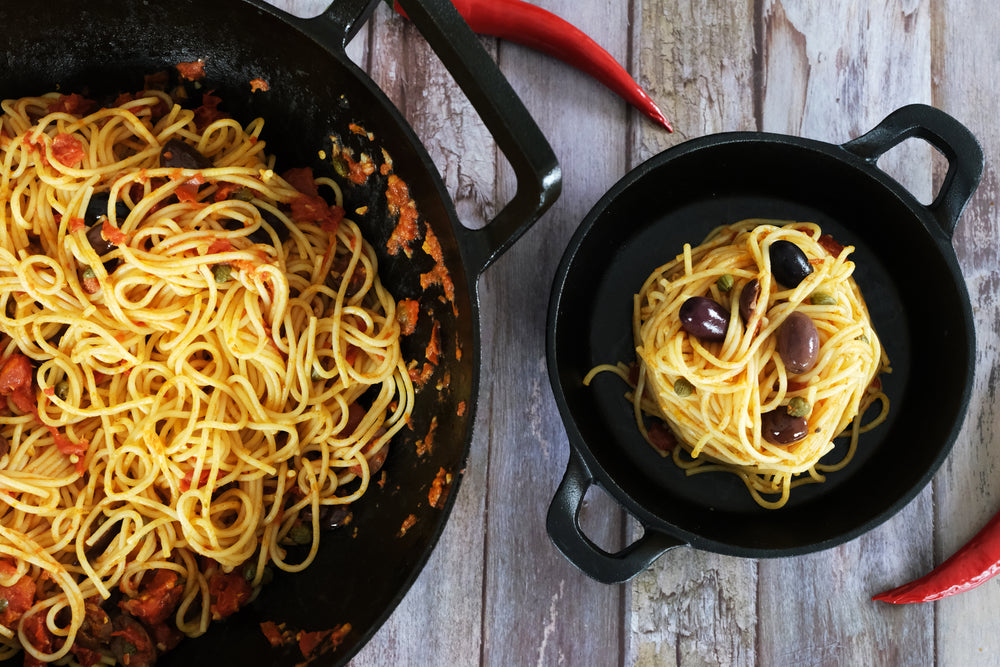What is The Difference Between Stock, Broth, Bouillon, and Fond?

Stock, broth, bouillon, and fond are all terms that are often used interchangeably, but they actually refer to slightly different things. In this blog post, we'll explore the differences between these four ingredients, when to use them, and how to make them.
First, let's define each of these terms:
Stock: Stock is a liquid made by simmering bones, vegetables, and aromatics in water. It is used as a base for soups, sauces, and other dishes, and is known for its rich, complex flavor.
Broth: Broth is similar to stock, but it is typically made with meat rather than bones (which means bone broth is actually stock), and it is seasoned with salt and other spices. It is often served on its own as a light, flavorful soup.
Bouillon: Bouillon is a concentrated form of broth or stock that is made by simmering the ingredients for an extended period of time, until the liquid is reduced to a thick, concentrated paste. It is then dried and ground into a powder or cube, which can be reconstituted by adding it to hot water.
Fond: Fond is the French term for "base" or "foundation," and it refers to the flavorful browned bits of food that are left behind in a pan after sautéing or roasting meat. These bits can be deglazed with liquid to create a rich, flavorful sauce.

Now that we've defined each of these terms, let's talk about when to use them:
Stock: Stock is a versatile ingredient that can be used as a base for a wide variety of dishes. It is an excellent choice for making soups, sauces, and braises, as it adds depth and complexity to the finished dish.
Broth: Broth is typically used as a light, flavorful soup on its own, or as a base for other soups and stews. It can also be used to add flavor to rice and other grains, or to braise vegetables.
Bouillon: Bouillon is a convenient way to add flavor to dishes when you don't have homemade stock or broth on hand. It is particularly useful when you are cooking in a pinch, as it can be reconstituted quickly by adding it to hot water.
Fond: Fond is an excellent choice for making rich, flavorful sauces. It is typically used in small amounts, as a little goes a long way in terms of adding depth and complexity to a dish.

Now that we've covered when to use each of these ingredients, let's talk about how to make them:
Stock: To make stock, start by roasting the bones in the oven for about 30 minutes, until they are browned. This will help to caramelize the bones and give the stock a deeper flavor.
Place the bones in a large pot or Dutch oven, and add enough water to cover them by about 2 inches. Bring the water to a boil, then reduce the heat to a simmer. Skim off any foam or impurities that rise to the surface.
Add the vegetables and aromatic herbs, such as onions, carrots, celery, and bay leaves, to the pot. Bring the stock back to a simmer, then reduce the heat to low and let it cook for at least 4 hours, or until the bones are very soft and have released their collagen.
Strain the stock through a fine-mesh sieve, discarding the solids. Let the stock cool, then store it in the refrigerator for up to 3 days, or freeze it for up to 3 months.
Broth: To make broth, start by placing the meat, poultry, or fish in a large pot or Dutch oven. Add enough water to cover the ingredients by about 2 inches. Bring the water to a boil, then reduce the heat to a simmer. Skim off any foam or impurities that rise to the surface.
Add the vegetables and aromatic herbs, such as onions, carrots, celery, and bay leaves, to the pot. Bring the broth back to a simmer, then reduce the heat to low and let it cook for at least 2 hours, or until the meat is tender and falls off the bone.
Strain the broth through a fine-mesh sieve, discarding the solids. Let the broth cool, then store it in the refrigerator for up to 3 days, or freeze it for up to 3 months.
Bouillon: To make bouillon, start by placing the bones in a large pot or Dutch oven. Add enough water to cover the bones by about 2 inches. Bring the water to a boil, then reduce the heat to a simmer. Skim off any foam or impurities that rise to the surface.
Add the vegetables and aromatic herbs, such as onions, carrots, celery, and bay leaves, to the pot. Bring the bouillon back to a simmer, then reduce the heat to low and let it cook for at least 4 hours, or until the bones are very soft and have released their collagen.
Strain the bouillon through a fine-mesh sieve, discarding the solids. Let the bouillon cool, then transfer it to a blender or food processor and puree until smooth. Return the pureed bouillon to the pot, and bring it to a boil. Reduce the heat to a simmer, and let it cook for an additional 15 minutes to thicken and reduce the volume.
Let the bouillon cool, then store it in the refrigerator for up to 3 days, or freeze it for up to 3 months.
Fond: To make fond, start by heating a large pan over medium-high heat. Add a small amount of oil or butter to the pan, and allow it to heat up. Add the ingredients that you want to use to make the fond, such as diced vegetables or diced meat, and cook them until they are browned and caramelized.
As the ingredients cook, they will release their natural sugars and proteins, which will caramelize and create a flavorful fond on the bottom of the pan. Once the ingredients are browned and caramelized, deglaze the pan by adding a small amount of liquid, such as broth or wine, and scraping up the browned bits with a wooden spoon.
The fond can be used immediately, or it can be transferred to a container and stored in the refrigerator for up to 3 days, or in the freezer for up to 3 months.
In summary, broth, stock, bouillon, and fond are all liquid ingredients that are commonly used in cooking to add flavor and moisture to dishes. They are made by simmering bones, vegetables, and aromatic herbs in water for an extended period of time, which extracts their flavor and nutrients. Broth is made with meat, poultry, or fish and is often served as a soup or used as a base for other dishes. Stock is made with bones and is used as a base for soups, sauces, and stews. Bouillon is a concentrated liquid that is used as a base for soups, sauces, and stews, and fond is the flavorful browned bits left behind in a pan after sautéing or roasting and is often used as a base for soups, sauces, and stews.
















Leave a comment